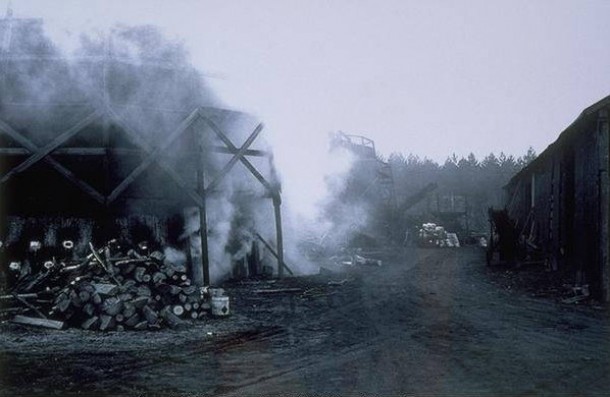…that the hurricane of 1938 which devastated the Quinebaug Forest ended up driving the development of the charcoal industry in Union.
The Quinebaug Forest Company began in the early 1900s and grew to include 6,000 acres of Union land planted with white pine and, later, red pine for use at the American Optical Company in nearby Southbridge, Massachusetts. Workers planted approximately 20,000 two-year-old pine or spruce trees at a time on the nursery property. When these reached five-years-old, they were used to replace the trees logged from the forest lands. The hurricane destroyed much of the harvestable timber. To make use of the thousands of uprooted trees, the land owners formed the Connecticut Charcoal Company and built charcoal kilns out of brick on the nursery site. Each kiln measured 30 feet in diameter and stood 28 feet tall with a 500-pound steel door to one side.
Charcoal is the residue left after the slow burning of long wooden slabs. The slabs are fed into the top of a kiln by a conveyor and arranged pyramid-style inside, by hand. The production of charcoal was a slow business. A fully loaded kiln accommodated 140 to 180 tons of wood and took 3 to 4 weeks to fill. Once full, the kilns were lit from the top and reached temperatures of 1,000 to 1,500 degrees Fahrenheit. The first 24 hours of the 7- to 10-day burning process were the most dangerous. Methane gas often built up during this period and sometimes led to explosions that sent the 500-pound kiln doors flying.
By 1946, the Connecticut Charcoal Company was Union’s only industry. It primarily served Southern New England’s large industrial users of charcoal, especially in the copper and brass industries.









